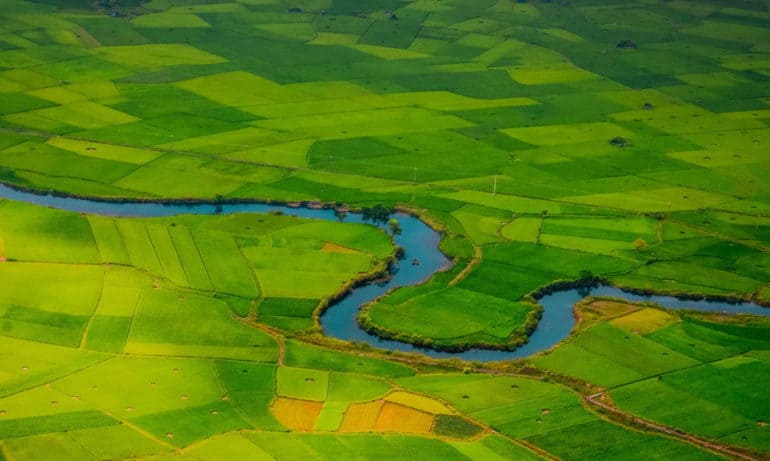The following is an excerpt from Nourished Planet: Sustainability in the Global Food System, published by Island Press in June of 2018. Nourished Planet was edited by Danielle Nierenberg, president of Food Tank, and produced with support from the Barilla Center for Food & Nutrition.
The Oakland Institute, an independent policy think tank specializing in social and environmental issues, defines land grabs as purchases of large tracts of land in poor, developing countries made by wealthier nations and private investors. The occurrence of land grabs, which is rising rapidly, is caused by a combination of global food price volatility, global food crises, and growth in speculative activity. More factors are fueling the spread of land grabs as well, such as the rise in land investments, the demand for agrofuels, and the rush of food-insecure countries to accumulate food banks.
A recent Oakland Institute report examines the impacts on global food security as international financial institutions drive control of food sources away from the public sector and to the private sector, severely compromising poor nations as they try to achieve food self-sufficiency. Among these institutions, the International Financial Corporation (IFC), the private-sector arm of the World Bank Group, plays a major role, financing private investments in the developing world by advising governments and businesses and encouraging governments to facilitate business transactions.
In 2008, the government of investment-starved Pakistan put 1.1 million acres of agriculture land up for sale and, in line with IFC philosophy, changed its laws to make it easier and more financially appealing for foreign investors to buy the land. Firms investing in Pakistani land markets are now offered a range of incentives, from 10-year tax breaks to assurances that high profits will be legally protected.
The absence of regulation on corporate investors as they buy up land has created a grave situation for small farmers in Pakistan’s Punjab province. A proposed land deal with the United Arab Emirates could displace 25,000 villagers. Of the 6 million families working approximately 50 million acres of land, 94 percent are considered subsistence farmers, each occupying an average of less than 12.5 acres. Furthermore, much of the land they have been farming for generations is owned by large private holdings or the government.
In Cambodia, government incentives and an unusually stable economy are contributing to a wave of foreign investments and fierce competition for fertile farmland, exacerbating the burdens of rural landlessness and food shortages. The Cambodian government continues to clear a path for foreign investors such as Kuwait and the United Arab Emirates, claiming that such land deals can solve the country’s food crisis. They support these claims with the statistic that only 2.5 million of Cambodia’s 15 million acres of available arable land is being used. Meanwhile, according to estimates, tens of thousands of Cambodians have been displaced in recent years. Today, says the FAO, 33 percent of Cambodian citizens are undernourished in the face of widespread rural poverty.
Some 1.5 billion small farmers in the world live on less than 2 hectares of land. Their food security, as well as that of rural populations throughout the developing world, depends on their having secure, equitable access to and control over the land they use to produce food.
Click HERE to purchase Nourished Planet today! Food Tank readers can enjoy a 20 percent discount with promo code: FOOD.













